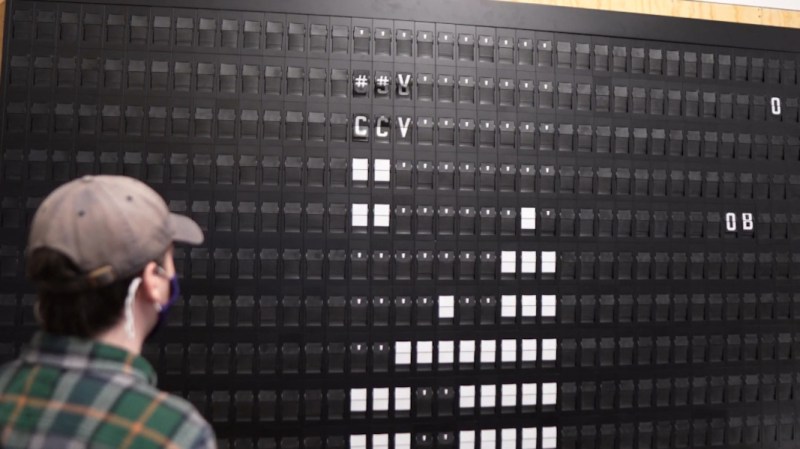It hardly seems possible, but engineer collective and split-flap display purveyors [Oat Foundry] were able to build a working implementation of Tetris on a 10 x 40 split-flap display in the span of a single day. Check it out in the video after the break.
This project is a bit understaffed in the details department, but we do know that [Oat Foundry] started with [Timur Bakibayev]’s open-source implementation of Tetris in Python and modified the draw function to work on a split-flap display. As you may have guessed, the biggest obstacle is the refresh rate and how it affects playability — particularly during those tense moments when a player rotates a piece before dropping it. Split-flaps flip quickly from on to off, but flipping back to on requires a full trip around through all the other characters.
We think this is nice work for a one-day build. Should they go further, we’d like to see the same things implemented as [Oat Foundry] does: a high score tracker and a preview of the next piece.
Don’t have a split-flap display? Yeah, us either, but we do have televisions. Turn on the tube and check out this Nano-scale Tetris.
Via reddit
















-1 for playing music over the magnificent sound of a split flap display.
nice build, but -1 for presentation
They added another video
https://youtu.be/ACY45oUadAE
I wanted to hear it :(
Here you go! https://youtu.be/ACY45oUadAE
There is a very good opensource splitflap project on github – i don’t know if this is what they’re using, but if you want to build your own, here ya go.
https://github.com/scottbez1/splitflap
This is a weird one. The project/video is starting out saying that it isn’t possible, then building something else around the impossibility (wireless controllers and modifying the draw function), and finally recapping that it’s still not possible, but it “is playable” if you ignore that it’s not possible, and you can sell it to the world if you speed up the video by 4x.
Failures are as important and as valuable as successes. Just don’t sell a failure as a success. This failure is benign, problems start if you sell a dangerous failure as a success.
Now that you mention it, watching the active footage at 1/4x causes the split-flaps to look like they’re moving at a plausible speed, and the game actually looks kinda playable. It’s too bad they felt this was a failure and needed to be doctored.
If I was doing it I’d grade the characters lightest, darkest and in between, and use lightest for blocks and darkest for space, so you’d only maybe have to go 5 or 6 flips to the next light or dark instead of round the whole wheel.
yeah, or just paint the flaps alternating black and white.